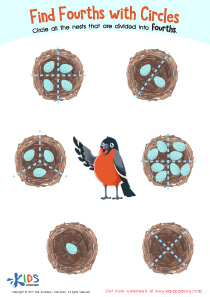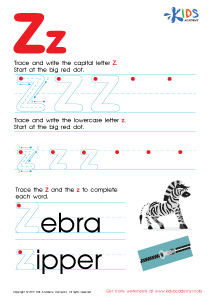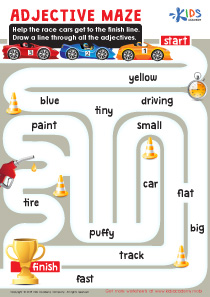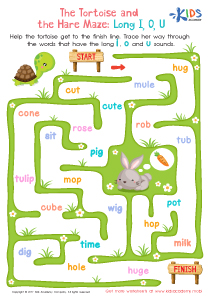Alphabet Recognition Extra Challenge Grade 2 Letter Recognition Worksheets
3 filtered results
-
From - To
Enhance your second grader's letter recognition skills with our engaging "Alphabet Recognition Extra Challenge" worksheets! Designed to support higher-level learning, these worksheets provide an exciting way for students to master the alphabet through fun activities. Your child will practice identifying, writing, and differentiating letters, ensuring a solid foundation for reading and writing. Each worksheet features colorful illustrations and interactive exercises that make learning enjoyable. Perfect for in-class assignments or home practice, these assessments help reinforce key concepts in a stimulating manner. Challenge your young learners and watch their confidence soar as they advance in their literacy journey!
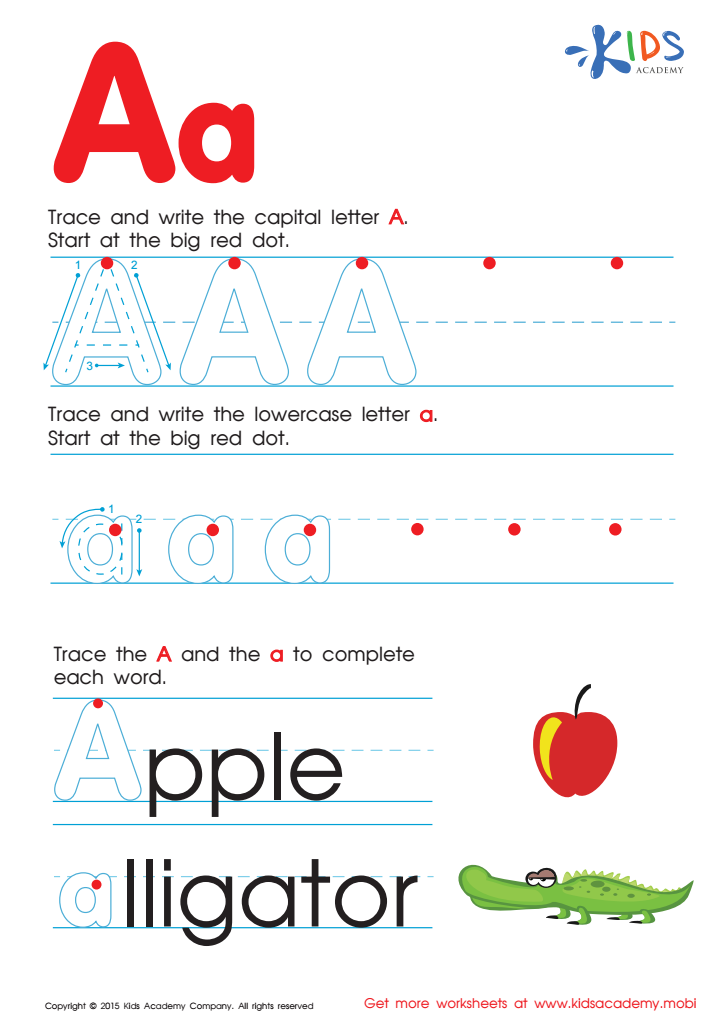

Letter A Tracing Page
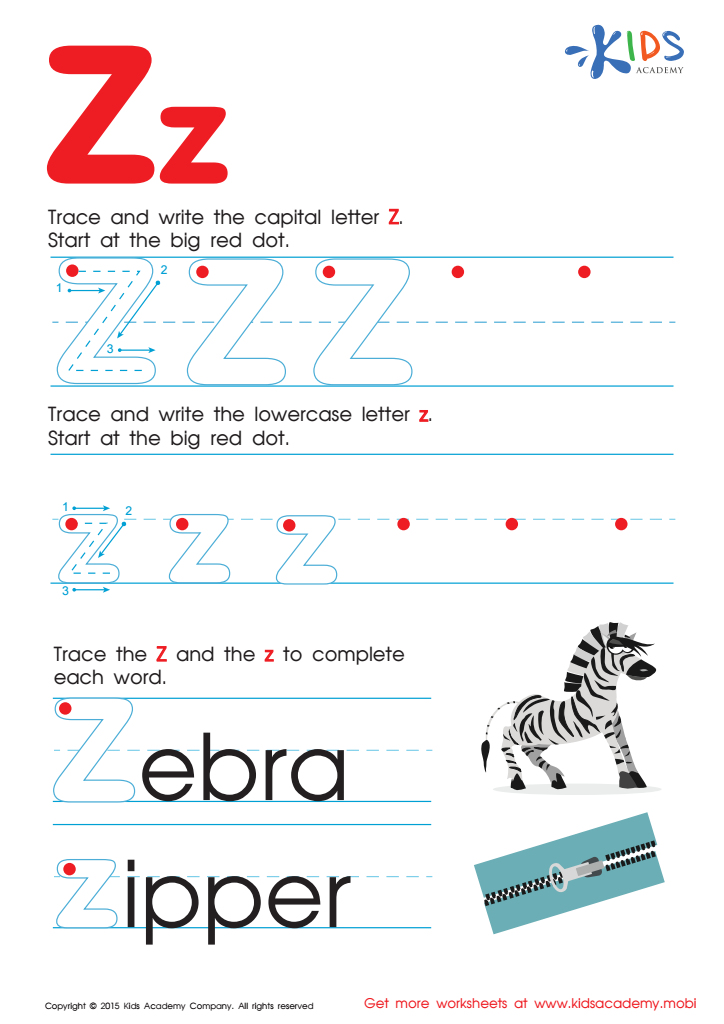

Letter Z Tracing Page
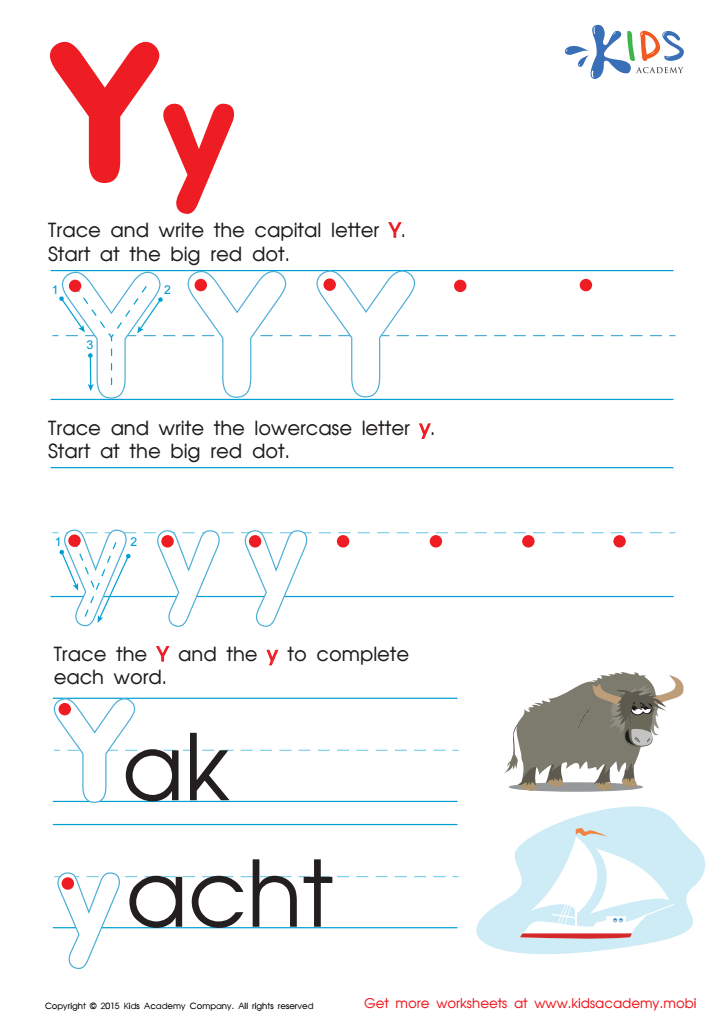

Letter Y Tracing Page
Alphabet recognition is a foundational skill that significantly influences a child's literacy development, making it crucial for parents and teachers to prioritize activities like the Alphabet Recognition Extra Challenge for Grade 2. At this stage, children are transitioning from learning letters to using them in reading and writing, meaning a strong grasp of letter recognition can bolster their confidence and proficiency in these areas.
Practicing letter recognition through extra challenges helps reinforce not only the identification of letters but also their sounds and the connection between letters and words. This is essential for building phonemic awareness, which is a critical skill for early reading success. Furthermore, a strong foundation in alphabet recognition contributes to improved vocabulary and comprehension skills as children progress in their education.
By engaging in these fun and interactive challenges, parents and teachers can provide children with meaningful learning experiences that cater to diverse learning styles. This can foster a love for reading and writing, encouraging lifelong learning habits. Ultimately, investing in strong letter recognition skills in Grade 2 sets children on a path toward academic success, increased self-esteem, and the willingness to tackle more complex literacy tasks in the future.
 Assign to My Students
Assign to My Students




